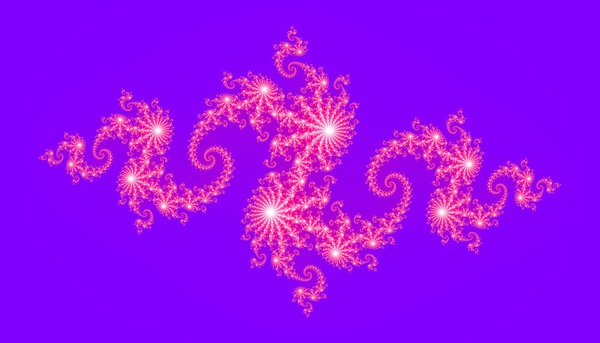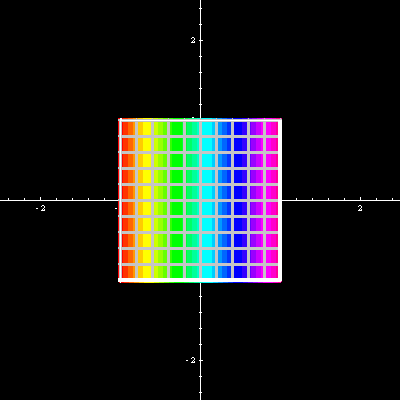 Author
Author |
Topic: Right inverse but no left inverse in a ring (Read 8350 times) |
|
ecoist
Senior Riddler
   

Gender: 
Posts: 405
|
 |
Right inverse but no left inverse in a ring
« on: Apr 3rd, 2006, 9:59am » |
 Quote Quote  Modify Modify
|
Let R be a ring with 1 and let a be an element of R with right inverse b (ab=1) but no left inverse in R. Show that a has infinitely many right inverses in R.
|
|
 IP Logged IP Logged |
|
|
|
Pietro K.C.
Full Member
  

 

Gender: 
Posts: 213
|
 |
Re: Right inverse but no left inverse in a ring
« Reply #1 on: Apr 21st, 2006, 2:32am » |
 Quote Quote  Modify Modify
|
Jolly good problem! After I get some sleep, and if there seems to be interest, I'll post my tortuous way towards the solution I found. For now, let me just state the results:
Take a,b as in the problem statement, i.e. ab=1 and 'a' without a left inverse. Consider the expression
an-1 - ban
It is never zero, as that would imply ba=1, contrary to our hypothesis. To see this, just suppose it WAS equal to zero and right-multiply everything by bn-1.
What's more, the above expression doesn't repeat values either. That is, if
f : N --> R is defined by
f(n) = an-1 - ban
then f is injective. To see this, suppose f(m) = f(n) for m>n to obtain the following equation:
am-1 - bam = an-1 - ban
Right-multiply everything by bn. The right side vanishes, giving us
am-n-1 - bam-n = 0
whence
am-n-1 = bam-n.
Right-multiply through by bm-n-1 to obtain ba=1, again contrary to initial supposition. So f is injective. Why is all this relevant? To allow us to construct an infinite family of right inverses to 'a'. It should be obvious that the expression under consideration,
an-1 - ban
has the very convenient property of vanishing under left-multiplication by 'a'. Therefore, if ab=1, then
a(b + an-1 - ban) = 1
for all natural n. Since g(x) = b+x is also injective, the above is an infinite family of right inverses.
|
|
 IP Logged IP Logged |
"I always wondered about the meaning of life. So I looked it up in the dictionary under 'L' and there it was --- the meaning of life. It was not what I expected." (Dogbert)
|
|
|
Barukh
Uberpuzzler
    

Gender: 
Posts: 2276
|
 |
Re: Right inverse but no left inverse in a ring
« Reply #2 on: Apr 25th, 2006, 10:53pm » |
 Quote Quote  Modify Modify
|
Very nice solution, Pietro! 
Please, tell your story.
|
|
 IP Logged IP Logged |
|
|
|
Michael Dagg
Senior Riddler
   

Gender: 
Posts: 500
|
 |
Re: Right inverse but no left inverse in a ring
« Reply #3 on: Apr 30th, 2006, 2:37pm » |
 Quote Quote  Modify Modify
|
Pietro K.C. result is on track with the classical result.
It also follows that right ideal is infinite as well.
The elements b + ( 1 - b a ) a^i are all right inverses of [a], and (assuming [ba] is not equal to 1) are distinct.
If the number of right inverses of [a] is finite, it follows that b + ( 1 - b a ) a^i = b + ( 1 - b a ) a^j for some i < j.
Subtract [b], and then multiply on the right by b^j; from ab=1 (and thus (1-ba)b = 0) we conclude 1 - ba = 0.
So if there are only finitely many right inverses, it's because there is a 2-sided inverse.
This problem is well known to the ring cognoscenti and it first appeared in N. Jacobson's algebra text and is attributed to Ivan Kaplansky.
|
| « Last Edit: Apr 30th, 2006, 2:42pm by Michael Dagg » |
 IP Logged IP Logged |
Regards,
Michael Dagg
|
|
|
Eigenray
wu::riddles Moderator
Uberpuzzler
    

Gender: 
Posts: 1948
|
 |
Re: Right inverse but no left inverse in a ring
« Reply #4 on: Jan 7th, 2008, 12:31am » |
 Quote Quote  Modify Modify
|
This actually came up for an algebra course I was grading. A student had assumed that:
Any non-unit of R is contained in a maximal left-ideal.
While false in general, before deciding how to grade it I wanted to know whether it was even true in the case under discussion (and how obviously true/false it was):
G is a finite group, F is a field, and R = F[G] is the group ring.
Of course if F were finite it would follow from the proof in this thread, but there was no such assumption.
So, is it true in this case? And as a followup: can you think of more classes of rings in which it is true that left-unit implies unit?
|
|
 IP Logged IP Logged |
|
|
|
|
 WRITE MATH!
WRITE MATH!
 Home
Home  Help
Help  Search
Search  Members
Members  Login
Login  Register
Register WRITE MATH!
WRITE MATH!
 Home
Home  Help
Help  Search
Search  Members
Members  Login
Login  Register
Register